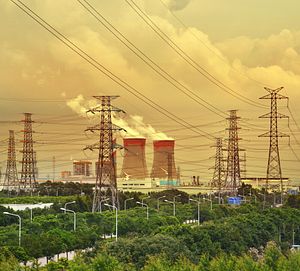China’s State Council unveiled its Energy Development Strategy Action Plan on Wednesday, creating a road-map for China’s energy use and development from 2014 to 2020. The complete Chinese-language document can be found here, with an English summary also available courtesy of Xinhua.
According to the plan, China will cap its annual primary energy consumption at an amount equivalent to 4.8 billion tons of standard coal. That means energy usage in China must grow by only 3.5 percent or less each year from now until 2020. The plan also announced a goal of capping total coal use at roughly 4.2 billion tons by 2020. For comparison, China burned 3.6 billion tons of coal in 2013; that means China can increase its coal usage by roughly 17 percent from 2013 levels before reaching the cap.
As part of its plan to reduce reliance on coal, the State Council set a goal of raising the percentage of the total energy mix supplied by clean energy to 15 percent by 2020. Currently, clean energy accounts for just under 10 percent of China’s total energy usage. Last week, in a joint climate change announcement issued with the U.S., Beijing announced an ambitious plan to have 20 percent of its total energy come from non-fossil fuel sources by 2030. By 2020, China wants to have 10 percent of its energy supplied from natural gas while lowering the overall share of coal to 62 percent from the current level of 66 percent.
As part of its focus on clean energy, China announced plans to expand its nuclear energy production with the construction of new nuclear plants in its eastern coastal regions. The State Council wants to have 58 gigawatts in nuclear power capacity completed with another 30 gigawatts in capacity under construction by 2020.
Aside from its emphasis on clean energy for environmental reasons, China is also encouraging a more diversified energy mix in a bid to reduce its reliance on foreign suppliers. Currently, China relies on foreign exports for nearly 60 percent of its oil, with Saudi Arabia, Angola, and Russia as the top oil suppliers. China also receives over 30 percent of its natural gas from foreign sources. The new plan will have China producing 85 percent of total energy used by 2020.
To achieve this goal, Beijing is placing a major emphasis on natural gas extraction. The State Council called for the establishment of eight new natural gas production bases by 2020, each capable of producing 10 billion cubic meters of gas per year. In addition to conventional natural gas extraction, China wants to produce 30 billion cubic meters each of shale gas and coalbed methane (CMB) per year by 2020.
Intriguingly, the State Council’s plan also emphasized deepwater drilling as a source of oil and gas for China. That could have obvious implications for the South China Sea, which is believed to have large undersea deposits of natural gas and oil – approximately 11 billion barrels’ worth of oil and 5.4 trillion cubic meters of natural gas, according to an estimate from the U.S. Energy Information Administration. In May 2014, China placed a deep-sea oil rig in waters off the Paracel Islands, an area that Vietnam claims as part of its exclusive economic zone. China-Vietnam relations are only now recovering from the spat that followed.
The State Council urged China to speed up the development of oil and gas extraction in its near seas, including the Bohai Sea and the East and South China Seas. The plan called for China to undertake both independent extraction projects and cooperative projects with foreign countries, potentially opening the door for joint development of resources in disputed regions. In the South China Sea in particular, the State Council ordered more exploration of potential deep sea drilling sites as well as calling for bids from foreign firms to extract these resources. China National Offshore Oil Corp. (CNOOC) has already been active in both regards, announcing the discovery of a major deepwater gas field 150 kilometers south of Hainan in September and asking for foreign firms to bid on 33 offshore oil blocks in China’s near seas. The extra focus on deepwater drilling will help China both assert its territorial claims and achieve its goal of 85 percent energy independence by 2020.
































